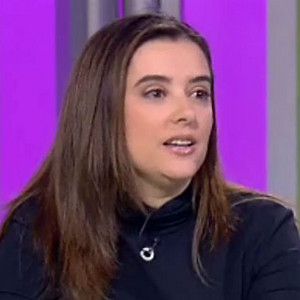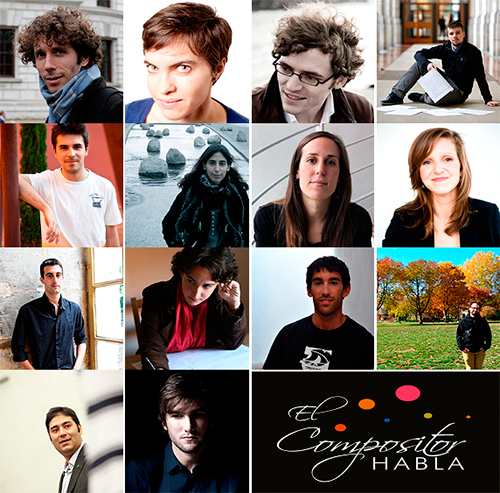Entrevistas
Elena Rykova | Interview with Elena Rykova
05/02/2018
Entrevista. El pasado 3 de febrero la compositora rusa Elena Rykova estrenó en el Theaterhausel de Stuttgart en el marco del Festival Eclat su último trabajo «Thousands splinters of a human eye». Hemos hablado con ella y esto es lo que nos ha contado.
El pasado sábado día 3 de febrero del 2018 la compositora rusa Elena Rykova estrenó en el Theaterhausel de Stuttgart en el marco del Festival Eclat su último trabajo «Thousands splinters of a human eye», para cinco voces y cinco instrumentos de lengüeta (2017) Estreno Absoluto. Composición encargada por Calefax y financiada por la Fundación Musical Ernst von Siemens.
Hemos hablado con la compositora y esto es lo que nos ha contado.
Last Saturday, February 3, 2018, Russian composer Elena Rykova premiered her last work "Thousands splinters of a human eye" for five voices and five reed instruments (2017), World Premiere, at the Theaterhausel in Stuttgart as part of the Eclat Festival. Composition commissioned by Calefax and financed by the Ernst von Siemens Musical Foundation.
We have spoken with the composer and this is what she has told us.
.jpg) 1. Ruth Prieto: In your biography I can read: “Composer, interdisciplinary and visual artist”.
1. Ruth Prieto: In your biography I can read: “Composer, interdisciplinary and visual artist”.Elena Rykova: I see myself as an artist. A necessity to define more specifically who I am comes only when there is a need to refer to a specific work, whether it’s a piece of music, painting, installation or performance art. It also depends on the environment I find myself in. My thinking doesn’t separate one activity or role from another. Almost always my ideas appear in the visual form first, even if I am working on a musical piece. At the same time, often when people look at my paintings and drawings, they tell me: “This is music!”. Of course, my primary education is musical, I’ve been studying music since I was six.
"The essence of music is under my skin and I believe it naturally influences everything I’m creating."
I’m fascinated with the concept of translating one discipline into or via another. My mind is constantly making connections across different fields of art when I am developing my ideas. For instance, sometimes in order to start composing I feel the need to make a painting first. While drawing, I may get the clue to the piece or find an approach to the sound. Besides, I also communicate my ideas to musicians in form of drawings and symbols on the paper. More and more my scores are turning into sort of artist’s books, sometimes nearly unable to be digitalized. This happened to my recent work Thousand splinters of a human eye written for Eclat festival.
In order to make the multilayered score, I used paper of different transparency; I had to make a special binding for the book. Apart from pencil drawing, I also integrated carving on the paper (with Xacto knife), as well as charcoal, graphite and ink as media. At the end of the process I realized that it is impossible to digitalize this score without losing a part of its communicative essence. As a result, I had to travel from Boston to Amsterdam to give the original score to musicians (I don’t really trust post service to carry this kind of tasks), so they could communicate with the object itself in person. While acknowledging the fact that it’s completely impractical from one side, imagining the score as an independent thing traveling around the world brings me a lot of joy. Why not? It even inspired me with an idea to found my own small publishing house for this kind of artist’s books. One day it will definitely be the case.
 2. R.P.: You have said this: “In my music, I am willing to create spaces, where people - musicians and audience - could meet and experience sonic and visual worlds, which I imagine and share with them, together”. How important is it nowadays to generate this space of creative sharing and why?
2. R.P.: You have said this: “In my music, I am willing to create spaces, where people - musicians and audience - could meet and experience sonic and visual worlds, which I imagine and share with them, together”. How important is it nowadays to generate this space of creative sharing and why? Elena Rykova: I think that the longer humanity exists, the more crucial becomes the need to create spaces for creative sharing. I love the time I live in, I love technology and all the possibilities it brings to us and I integrate it in my own art making. But I was growing up without a cell phone or computer and I remember very well the communication between people back then (for a context, it’s worth mentioning that I was growing up in Russia in the 90-s). I feel that now we are in some ways more alienated from each other. While staying in contact with thousands of people via social net around the world, sometimes I miss the depth and the nature of communication, which was once naturally present. How many times instead of writing or calling to a person who we haven’t heard from for a while, we don’t go beyond visiting their webpages?
It is fascinating to exist in the moment when culture of communication between people changes so rapidly and radically. Although, I believe that it is very important to carry with us what is significant for us through this change, in this way we will proceed weaving the threads of connections to essential parts of ourselves, something that we genuinely care about.
"This is why all my pieces primarily are about communication between people, people and objects, people via objects and objects via people, their interactions and relationships between them."
3. R.P.: We have the idea, probably very old, of what a concert is: people playing and people listening. How do you imagine “concerts” in the XXI century?
Elena Rykova: The beauty of now is that the concert situation can take absolutely any form and I am definitely joining those artists who are interested in re-contextualizing existing formats or inventing the new ones. I think that each work of art has its own environment, its own ideal place to live, almost like an animal or a plant: some areas might be better, others could bring more difficulties for survival or cause mistreatment or misunderstanding. I personally prefer open formats, like gallery spaces, black boxes, transformable platforms maximally free of contexts, rules or codes of behavior assigned to them. Those spaces also give a possibility to meet new audience, to broaden it. It is very important for me to search for new audiences all the time, otherwise I start to feel as a member of a contemporary art sect. This is another important reason I like to change between the arts; when I get a little too accustomed to compositional circles, I shift to painting or dance performances or I dive in collaborative projects, start making installations with other artists, I write essays or create other things or build instruments.
"Each field brings possibilities to meet new people and to learn from them, allow them to change and influence me and affect my previous thinking patterns."
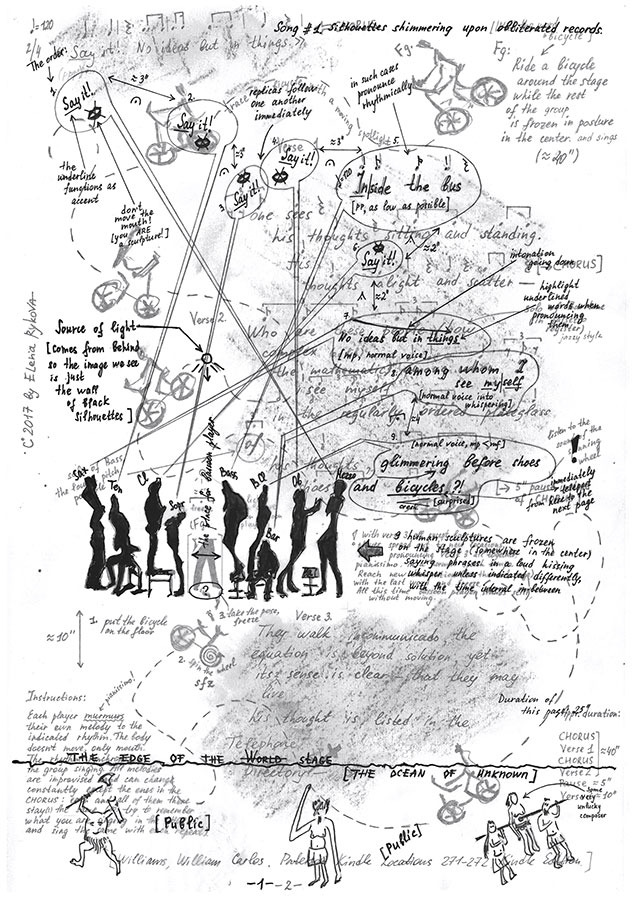
4. R.P.: You latest work Thousand splinters of a human eye was premiered at the ECLAT festival in February. What can you tell us about this piece?
Elena Rykova: This piece is the most theatrical projects I’ve had so far. It is indeed very visual, it is important to see what is happening, not only to hear it. I was approaching the sound through the transforming image on the paper. The images on the paper - my drawings - represent the process of searching for images in my imagination (and this is what’s actually happening on the stage). One of my recent obsessions is the concept of unfolding situations, let’s call it matreshka-situation: when inside one macro event there are several micro situations, which could also consist of several micro dialogues or trialogues within themselves. The crucial point is that all of them exist at the same time and have their own gravitational forces, they could be somewhat dependent on each other but at the same time they are self-sufficient on their own.
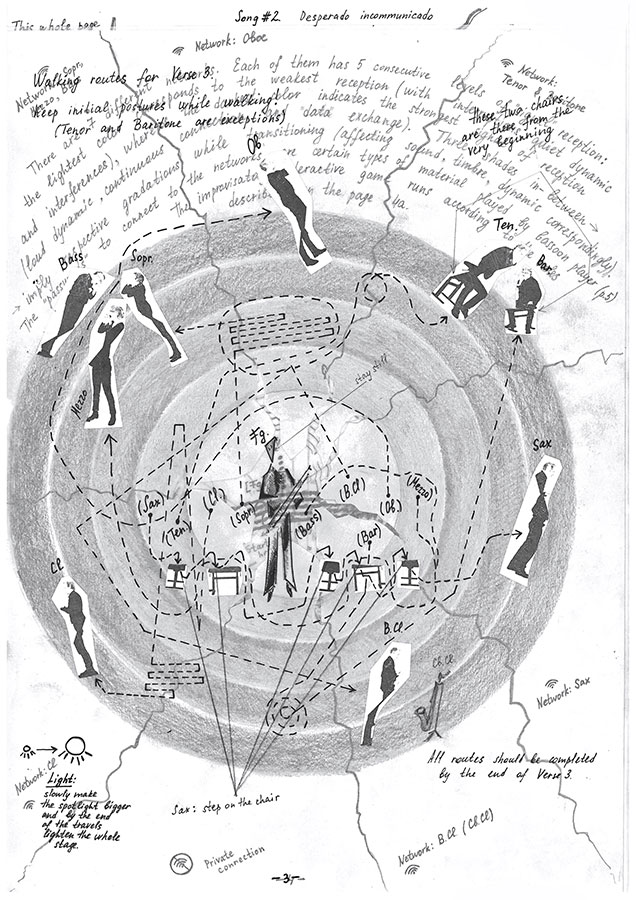 Thousand splinters of a human eye is written for Calefax reed quintet from Amsterdam and Neue Vocalsolisten Stuttgart. It is a part of a big project called Morphing relations with premiere at Eclat festival 2018 followed by a tour of five EU concerts in April. The core idea behind the piece is an interplay between “me / not me”, imaginative contemplation on what if all the people and things we see are the projections of our own thoughts? Do we exist beyond our thoughts or what if we were to exist separately from our thoughts? There are plenty other questions drawn from these first ideas present in the piece, the whole work is indeed surreal, funny and sometimes puzzling. Some ideas I’ve explored earlier in my other works, like mapping the routes for movement or multiple re-contextualization of objects and situations occurred to happen in this piece as well. The score is a total blend of different notations, drawings, symbols, texts; the score became an object that communicates the essence of the sound world and the knots of meanings in the piece visually.
Thousand splinters of a human eye is written for Calefax reed quintet from Amsterdam and Neue Vocalsolisten Stuttgart. It is a part of a big project called Morphing relations with premiere at Eclat festival 2018 followed by a tour of five EU concerts in April. The core idea behind the piece is an interplay between “me / not me”, imaginative contemplation on what if all the people and things we see are the projections of our own thoughts? Do we exist beyond our thoughts or what if we were to exist separately from our thoughts? There are plenty other questions drawn from these first ideas present in the piece, the whole work is indeed surreal, funny and sometimes puzzling. Some ideas I’ve explored earlier in my other works, like mapping the routes for movement or multiple re-contextualization of objects and situations occurred to happen in this piece as well. The score is a total blend of different notations, drawings, symbols, texts; the score became an object that communicates the essence of the sound world and the knots of meanings in the piece visually.This piece is also about an attempt to find a way to say things that we almost never get to say, to pronounce those thoughts that represent us the most, through the chain of fears, nightmares, confusion, despair, illuminated from time to time by occasional flashes of victory and joy. How many dialogues, voices, thoughts and their masks are flying through our mind if we were to chase them?
5. R.P.: You speak about your idea of the score being an art object, with which musicians are invited to communicate and establish their own personal relation. Could you explain that in a bit more detail?
Elena Rykova: It isn’t enough for me to have a score just as a functional object. I want my scores to communicate the essence of the piece, its mood and character. As each piece is a different story, my scores look a lot different. Of course, one can recognize my style, I work by hand and there are symbols that I repeat in different scores. In my two recent pieces I also started using transparent paper in order to integrate information on playing techniques and other comments inside the score to avoid making papyruses of instructions. There are several reasons for me to draw my own kind of scores.
One of them is a research on what the score might be. I would like to make people curious, surprise them and by doing so, influence their relation to the score. Score, as I see it, is a living being that communicates with people on its own. It speaks to them when I cannot. In these cases, when musicians don’t know me in person, they get to know not only about my music from my scores but also about me. And this I find extremely important. It’s again a matter of sharing understanding.
Once in 2013 a good friend of mine was helping me with the video edition of my performance piece The Mirror of Galadriel and after he told me that he couldn’t really start working on it until he watched it five-six times in order to understand it. I was curious what exactly he understood eventually. And he answered to me: “I can’t tell you in words what I understood but I can feel that now I understand it somewhere, where you understand it”. I’ve never thought before that understanding might have its own geography, I find this concept not only beautiful but true. I believe that the real understanding between people goes beyond words and it indeed has its own special place.
"In my art, I want to create those spaces and invite people to inhibit them together."
6. R.P.: In this personal "inventory" that we all have of noises, sounds, music and songs, what can you tell us about your soundscape?
Elena Rykova: Behind each sound there is an object (and instruments are also objects in this sense). I don’t perceive sound as an abstract phenomenon, I always see the face of the thing behind. This is where visual part of my works comes from. I have a strong tactile connection to the sound by interacting with a real physical object. The character of sound reveals itself in an interactive situation between the thing and the musician or also between two or several things. Interaction doesn’t happen in the vacuum, there is always a context for it, even if it is a spontaneous improvisation on the spot.
Back in 2016 I became acquainted with the Thing theory invented by Bill Brown while writing a paper on the improvisation with found objects by Marina Poleukhina and Alexander Chernyshkov; since then my fascination with the things scripting and affecting human behavior, especially in a musical context, has developed further. For instance, over the last summer I wrote a 20-minute solo piano piece for a pianist from Spain Ricardo Descalzo called Cositas Diminutas or Speaking Objects, exploring exactly this idea of interaction between things and things and humans.
7. R.P.: What is your DNA as a composer? What is your working process?
Elena Rykova: I like the idea of not drawing a line between life and art. Any experience I live through influences all of me and each single part of me. My DNA consists of people I love, people who taught me the most important lessons in life that I preciously carry inside. One of them is the most basic: loving and enjoying making music, meaning also not taking myself too seriously. I strongly believe that true humor towards ourselves, in art and life, is always the first remedy from all sort of composer’s anxieties. It is very easy to forget about it.
Another lesson that I’ve learnt is that the moment the idea comes to us, we already know everything about it, we just need to discover its details and features. The best way for me to do it is by asking myself questions about it or ask someone to ask me questions, somehow the answers always pop up without hesitation. My dear teacher from the time I studied in Cologne, professor Johannes Schöllhorn, helped me to discover it. He taught me to learn from myself and I see it as the most important composition lesson in my life.
My other important belief is that there is no time to doubt. There is always time to think on the ideas but there is no time to doubt them. The moment we doubt, the idea flies to another mind, who will most likely realize it. Besides, there is always a reason why we see what we see, even if this reason is not clear to us at the very moment we look at it. There is one more important lesson I’m constantly being reminded of by kids: to stay curious and play with things, materials, sounds.
"Playful mode is directly connected with the ability to be genuinely surprised, alive, to act intuitively and imagine beyond the limits."
8. R.P.: What are your upcoming projects?
Elena Rykova: Among my next projects are: an etude for guitar solo commissioned by Yaron Deutsch for Darmstadt Summer Course 2018, a piece for amplified trombone prepared with music boxes for Weston Olencki, pieces commissioned by Schallfeld ensemble and Curious Chamber Players. Besides, there are a couple of exhibitions coming up in June. One of them is the exhibition of my scores in New York city at the venue of National Sawdust on the 12th of June. On the same day there is another exhibition as a part of the festival in Salzburg, where my collaborator, architect Martina Schlusnus and I will exhibit our installation Music Boards and also give workshop on making instruments.
More information about the premiere in Eclat 2018
More information about the composer on her personal website Elena Rykova
More information about the composer in hes profile on our website ECH-Elena Rykova
Photo credit: Nikolay Kritsky courtesy of the composer
Biblioteca
Destacamos ...
Nueva Sección Directorio
dedicada a la promoción de compositores, intérpretes, instituciones y editoriales.
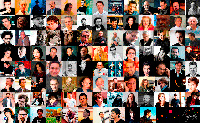
dedicada a la promoción de compositores, intérpretes, instituciones y editoriales.


